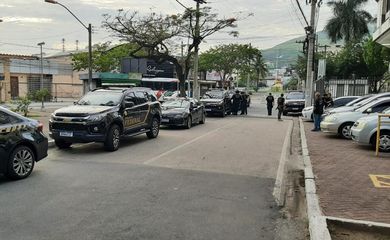PF investigates fraud and corruption in works at the Castelão Stadium

This Wednesday (15) the Federal Police launched Operation Colosseum, to investigate fraud and bribe payments to public agents and servers involved in the bidding process for works on the Castelão stadium, in Fortaleza, between 2010 and 2013.

About 80 federal police carried out 14 search and seizure warrants, issued by the 32nd Federal Court of Justice, in homes located in Fortaleza, Meruoca (CE), Juazeiro do Norte (CE), São Paulo, Belo Horizonte and São Luís, where they apprehended digital media, cell phones and documents.
According to the Federal Police, investigations began in 2017, when signs of a criminal scheme involving the payment of bribes were identified so that a particular company could succeed in the arena's bidding process.
“Evidence was found of payments of R$ 11 million in bribes directly in cash or disguised as electoral donations, with fraudulent invoices issued by phantom companies,” the corporation said.
The investigations, according to the Federal Police, are ongoing, with an analysis of the material seized during the operation and the financial flow of the suspects. The investigated may be liable for the crimes of money laundering, bidding fraud, criminal association, active and passive corruption.
former governor
Through a note and publications on social networks, the former governor of Ceará Ciro Gomes confirmed that his residence was the target of one of the warrants. “The pretext was to collect alleged evidence of an alleged scheme to favor a company in the bidding for the works on the Castelão Stadium for the 2014 World Cup,” he said.
In the statement, Ciro says he has no connection with the facts found and that he has not held any public office related to those investigated. "I never had any kind of contact with the whistleblowers."
“It gets to be picturesque. All of Brazil knows that Castelão was the World Cup stadium with the greatest competition, the first to be delivered and the cheapest built for World Cups since 2002. In other words, it was the most economical and transparent stadium ever made for the World Cup ”, said Ciro Gomes.
Text translated using artificial intelligence.



